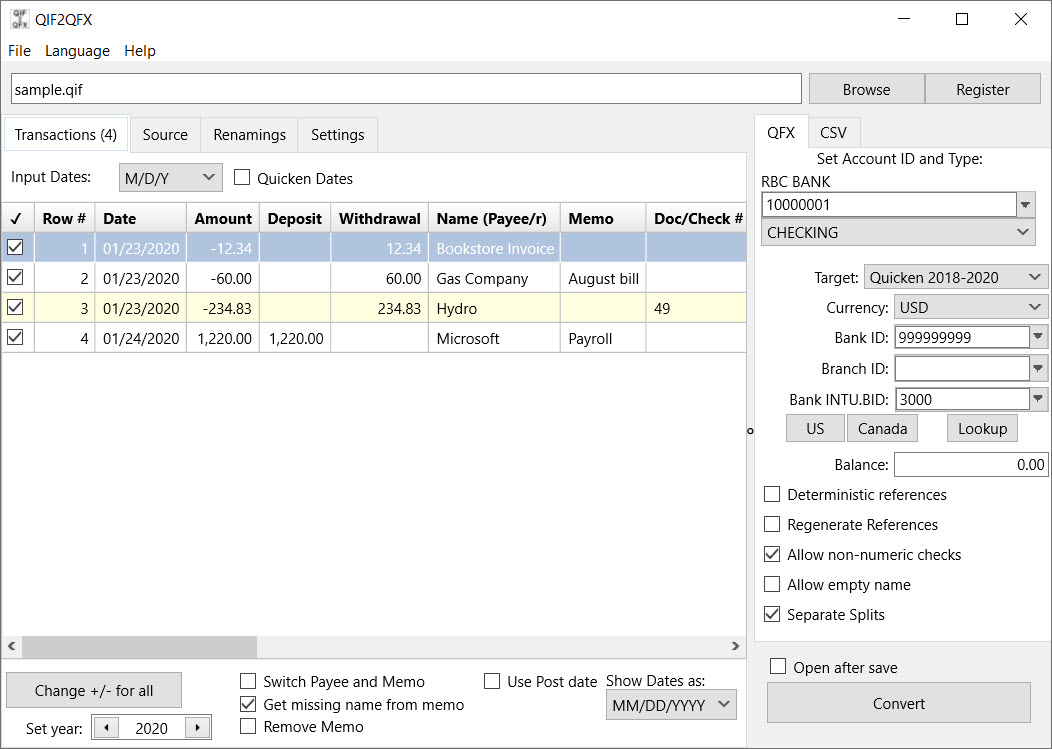

- #IMPORT QUICKEN QIF FILE INTO GNUCASH HOW TO#
- #IMPORT QUICKEN QIF FILE INTO GNUCASH UPDATE#
- #IMPORT QUICKEN QIF FILE INTO GNUCASH MANUAL#
- #IMPORT QUICKEN QIF FILE INTO GNUCASH FULL#
#IMPORT QUICKEN QIF FILE INTO GNUCASH UPDATE#
Once you have verified your account names and investment information, click Finish in the Update your GnuCash accounts page to complete the import process. If you do not have this information handy, you can edit the account information later, once the import is complete.
#IMPORT QUICKEN QIF FILE INTO GNUCASH FULL#
NASDAQ), the security's full name, and the ticker symbol. The importer dialog will ask for the exchange or listing (i.e. If you have stocks, mutual funds, or other securities, you will be prompted for additional information. It is easy to edit the accounts later if you find you need to make a change.įrom the drop-down list, select a standard currency to be used for imported accounts and click Next to continue. If you are not sure what changes are needed, it is safe to accept the GnuCash account names. Make changes to these account names if necessary, and click Next to continue.


QIF income and expense categories import as GnuCash income and expense accounts (see section 3.1 for more on this). Click Next when you have finished making changes, and proceed through a similar category matching process. To change an account name, select the row containing that account name and edit the name in the dialog box provided. Clicking Next will bring you to a view comparing your QIF accounts with the corresponding GnuCash accounts created. The importer then matches up your QIF accounts and categories with GnuCash accounts and gives you a brief description of the matching process. Review the GnuCash accounts to be created. When you have loaded all your QIF files, click Next to continue with the import process. Once the file is loaded, select Load another file if you have more files to load. Use the Select button to select your QIF file and click Next to load it. You will be prompted for a filename to load. This image shows the start of the QIF Import Druid. For example, if one of your transactions transferred money from savings to checking, you would end up with this same transaction recorded twice - once in the savings account and once in the checking account. Duplicate transactions result when more than one account is involved. Before you get started, though, please note that part of the import process involves checking for duplicate transactions, so it is very important that you load all of your QIF files before importing. Once your data is in QIF form, follow the easy 3-step import process described below.
#IMPORT QUICKEN QIF FILE INTO GNUCASH MANUAL#
Check your program's manual to determine if this option is available. An easier way, available in Quicken® 98 and beyond, is to export all accounts at once into a single QIF file. One way to do this is to export each account as a separate QIF file. To import data from Quicken®, MS Money, or other programs that use QIF(Quicken® Interchange Format), you must first export your data to a QIF file. Section 11.5 addresses importing QIF data from online bank statements.
#IMPORT QUICKEN QIF FILE INTO GNUCASH HOW TO#
From there you should see your file and it will attempt an import.This section tells you how to initially import data from other financial programs that use QIF (Quicken® Interchange Format). Scroll down on this screen to where the import buttons are. Tap on the Exports & Preferences tab on the bottom.


 0 kommentar(er)
0 kommentar(er)
